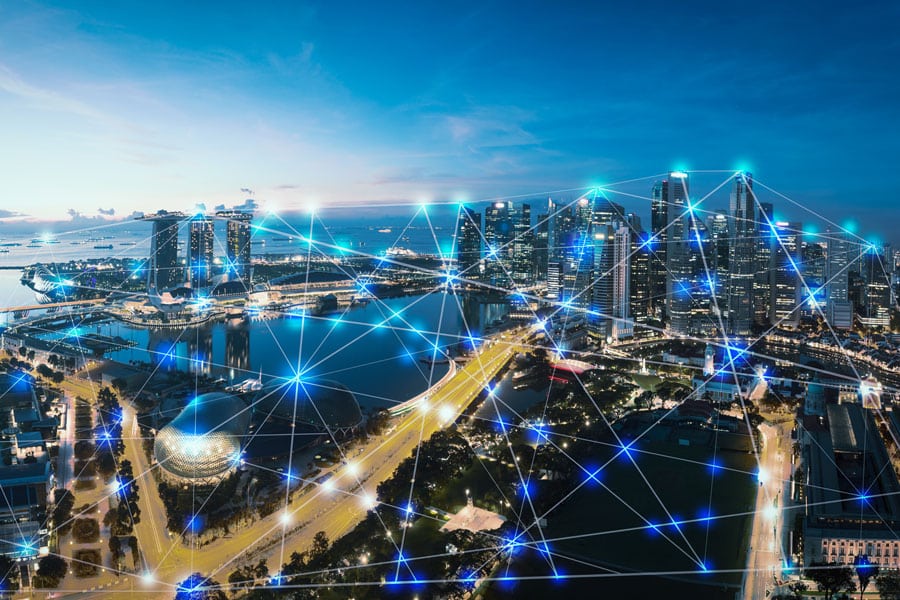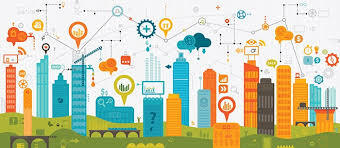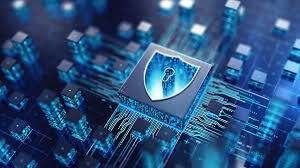Smart cities harness technology and data-driven solutions to enhance urban sustainability, improve quality of life, and optimize resource management. By integrating IoT devices, sensors, AI algorithms, and data analytics, smart cities aim to address urban challenges efficiently and sustainably. This article explores the concept, components, benefits, challenges, applications, and future trends of smart cities.
Understanding Smart Cities
- IoT and Sensor Networks: Smart cities deploy IoT devices and sensor networks to collect real-time data on environmental conditions (e.g., air quality, temperature), traffic flow, energy consumption, and infrastructure usage. Sensors monitor critical parameters and enable data-driven decision-making for city management.
- Data Analytics and AI: Advanced analytics and AI algorithms analyze vast datasets to derive actionable insights for urban planning, predictive maintenance, public safety, and resource optimization. Machine learning models optimize traffic flow, energy distribution, waste management, and emergency response systems.
- Citizen Engagement and Services: Smart cities prioritize citizen-centric services and engagement platforms. Mobile apps, digital interfaces, and IoT-enabled devices provide residents with real-time information, personalized services (e.g., public transportation updates, smart parking), and avenues for community participation.
Benefits of Smart Cities
- Sustainability and Resource Efficiency: Smart cities promote sustainable practices by optimizing energy consumption, reducing greenhouse gas emissions, and enhancing water management through smart grids, energy-efficient buildings, and smart irrigation systems. Resource-efficient technologies minimize waste and environmental impact.
- Improved Urban Mobility: Smart transportation systems optimize traffic management, reduce congestion, and enhance public transportation services. Real-time data analytics enable route optimization, dynamic pricing, and seamless integration of multimodal transportation options, promoting efficient mobility solutions.
- Enhanced Safety and Security: IoT sensors and AI-powered analytics enhance public safety by monitoring crime patterns, detecting anomalies, and facilitating rapid emergency responses. Smart surveillance, facial recognition, and predictive policing technologies improve law enforcement capabilities and crisis management.
Challenges and Considerations
- Privacy and Data Security: Collecting and analyzing vast amounts of personal data raise concerns about privacy, data protection, and cybersecurity risks. Implementing robust encryption, anonymization techniques, and stringent data governance frameworks ensures citizen trust and compliance with regulations.
- Digital Divide and Inclusivity: Bridging the digital divide ensures equitable access to smart city technologies and services for all residents. Addressing socioeconomic disparities, digital literacy programs, and inclusive planning strategies promote accessibility and foster community engagement.
- Infrastructure Integration: Integrating diverse technologies, legacy systems, and stakeholder collaboration pose challenges in smart city deployment. Standardizing communication protocols, interoperability frameworks, and scalability of infrastructure support seamless integration and long-term sustainability.
Applications of Smart Cities
- Smart Energy Management: Smart grids optimize energy distribution, monitor consumption patterns, and integrate renewable energy sources (e.g., solar, wind) to reduce reliance on fossil fuels and lower carbon emissions. Energy-efficient buildings and smart meters enhance sustainability in urban environments.
- Waste Management and Sustainability: IoT-enabled sensors monitor waste levels, optimize collection routes, and promote recycling initiatives. Smart waste bins, automated sorting systems, and data-driven strategies minimize landfill waste and promote circular economy practices.
- Healthcare and Public Services: Smart healthcare systems utilize telemedicine, wearable devices, and AI-driven diagnostics to enhance healthcare delivery, monitor patient health remotely, and predict disease outbreaks. Smart city platforms facilitate efficient public service delivery, emergency response coordination, and disaster management.
Future Trends in Smart Cities
- 5G and Edge Computing: Integration of 5G networks and edge computing enhances real-time data processing, supports IoT deployments, and enables low-latency applications (e.g., autonomous vehicles, AR/VR experiences). Edge intelligence and distributed computing architectures optimize network performance and reliability.
- Blockchain for Transparency: Blockchain technology enhances transparency, traceability, and security in smart city transactions (e.g., energy trading, supply chain management). Decentralized ledgers and smart contracts promote trust, streamline administrative processes, and ensure data integrity.
- AI-powered Urban Planning: AI algorithms predict urban growth patterns, optimize infrastructure investments, and simulate city simulations for sustainable development. AI-driven predictive analytics inform policy-making, land use planning, and infrastructure resilience against climate change impacts.
Conclusion
Smart cities leverage technology innovation, data analytics, and citizen engagement to create sustainable, efficient, and inclusive urban environments. By addressing challenges through robust cybersecurity measures, equitable access to technology, and integrated infrastructure solutions, smart cities pave the way for a connected future where cities become more resilient, livable, and responsive to the needs of their residents.



